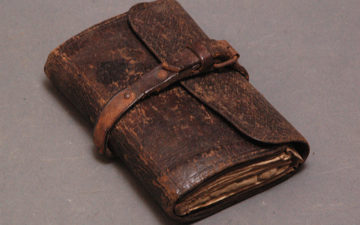- Heddels
- Posts
- July 10 - Iron and Resin Terry
July 10 - Iron and Resin Terry
Together with
Get to Know Terry – The History and Importance of Terry Cloth with Iron & Resin
David Shuck and Albert Muzquiz

Terrycloth is a fabric we encounter at least once a day (hopefully) when we step out of the shower and towel ourselves off. Perhaps you have a luxurious bathrobe that you lend to your sleepover pals, so they can discreetly sneak past your roommates, that’s probably also terrycloth. Maybe you’re Sean Connery circa 1964 and have a very soft romper… whaddya know, that’s terrycloth too!
Terrycloth is a plush fabric best known for water absorption, making it the ideal choice for the aforementioned towels, robes, and iconic pre-pool playsuits. With the return of resort wear fashion in the early 2020s, terrycloth has seen a healthy resurgence after years in the shadow of its more versatile cousin, French terry. Today, we’ll learn a bit more about both terrycloth and French terry, where you’ll find them, and how to spot quality terry.
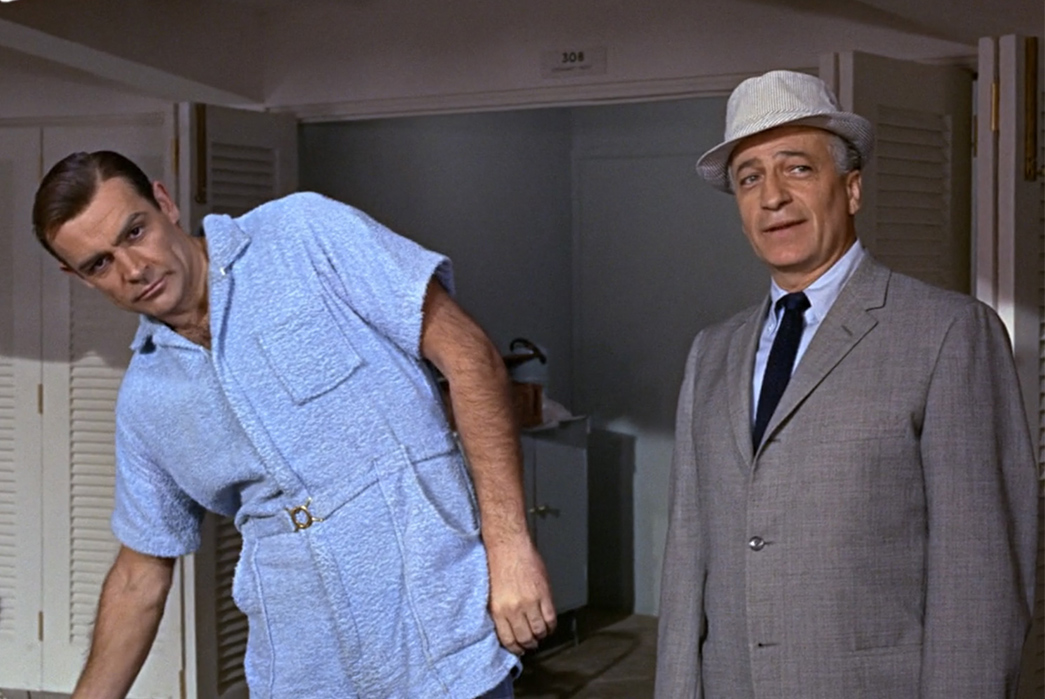
Sean Connery’s famous Terrycloth playsuit in “Goldfinger.” Image via Bondsuits.
What is Terrycloth?
Terrycloth and all its variants were born of a pre-industrialized French innovation by which the fabric was woven on a loom with not one, but two warp threads. One warp thread is left intentionally loose which, when pulled through the dense weft, forms loops on either side of the fabric, creating a pile effect.

The first batches of terrycloth were made from silk, but eventually, the standard terrycloth would become the super-soft 100% cotton fabric that we know and love today.
The Dawn of Terry
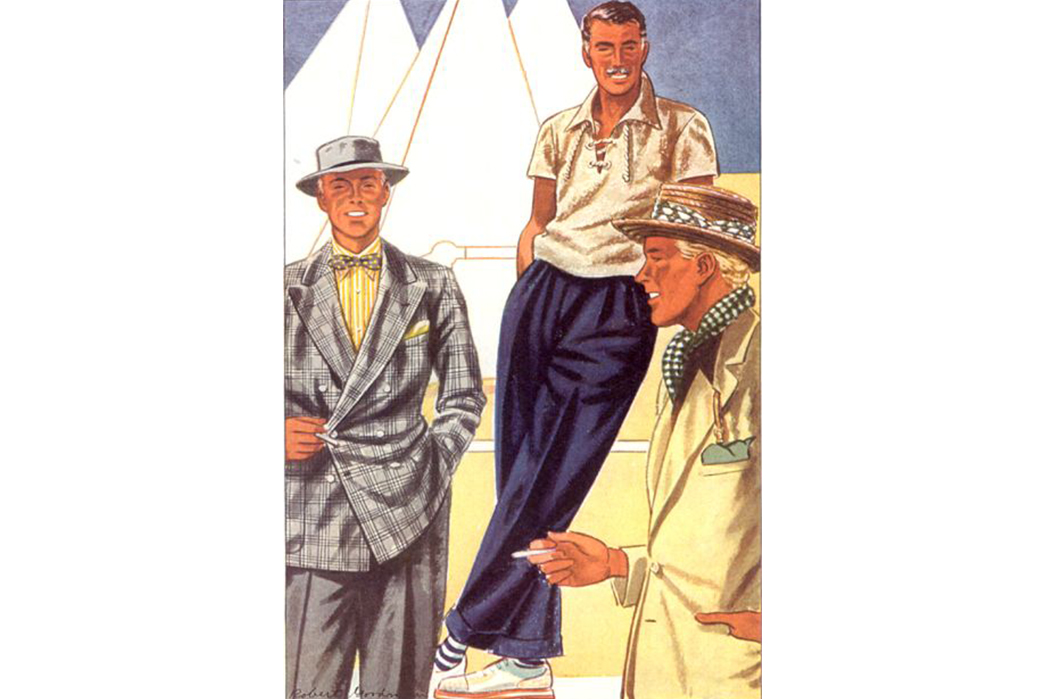
Esquire Illustration (we believe) Terrycloth shirt on center gentleman. Image via Pinterest.
Starting in the 1850s, Samuel Holt’s terrycloth knitting machines began churning out terrycloth at an industrial scale. The name terrycloth, it is believed, comes from the French verb “tirer,” which means“to pull,”which certainly makes sense given how the fabric is made.
This new pile gave terry cloth significantly more surface area than typical knits, meaning it was softer and much more absorbent. That factor made it a clear choice for use in towels, especially considering before terrycloth’s invention, people just used woven sheets of cotton or linen to dry off—definitely not as comfortable.
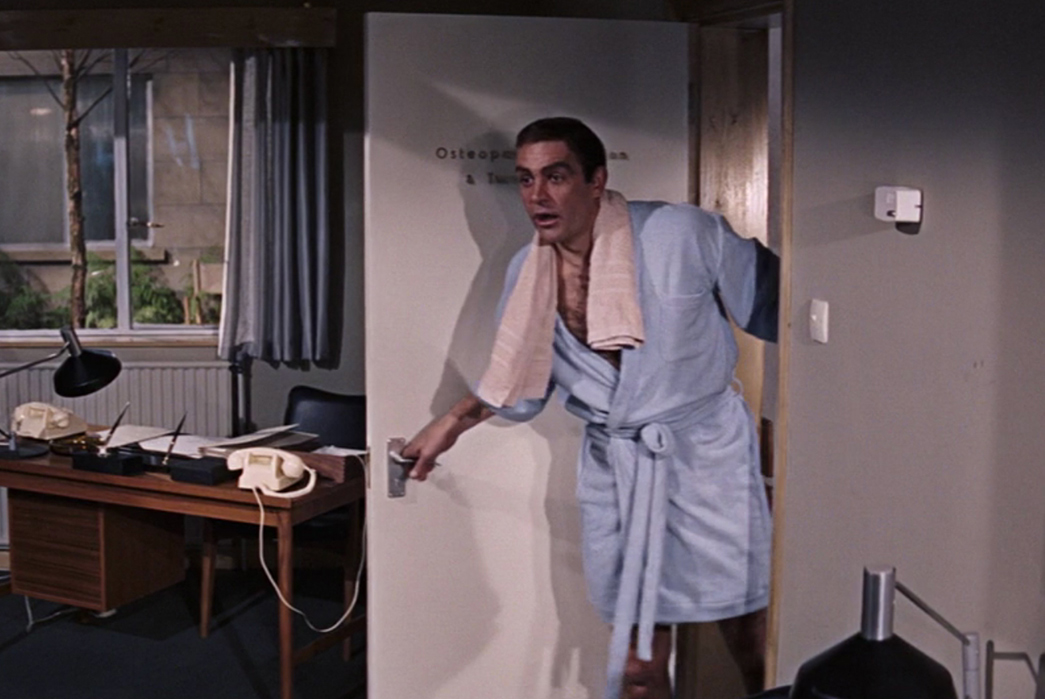
Sean Connery as James Bond in a different terrycloth piece. Image via Bondsuits.
What is French Terry?
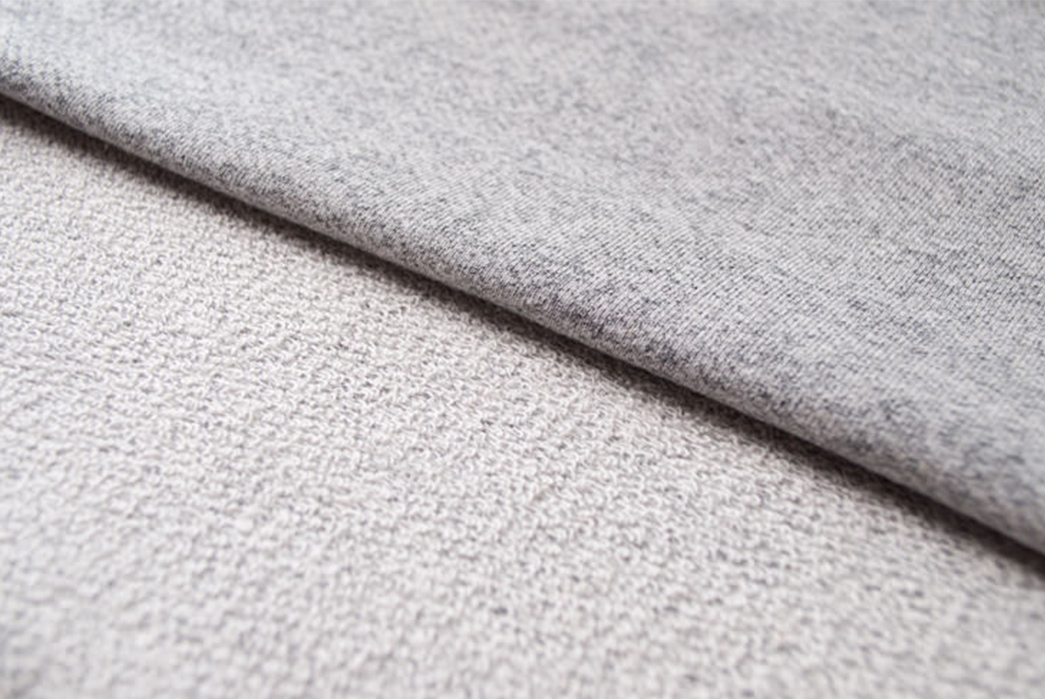
French Terry. Image via Indie Sew.
Even if terrycloth sounded like a foreign concept to you, you’ll most certainly know French terry. French terry is basically a lighter and more pragmatic style of terry where one side of the fabric is smooth and only one side has the characteristic piling. You’ll often find French terry on sweatshirts and other casual garments.
French Terry in Action
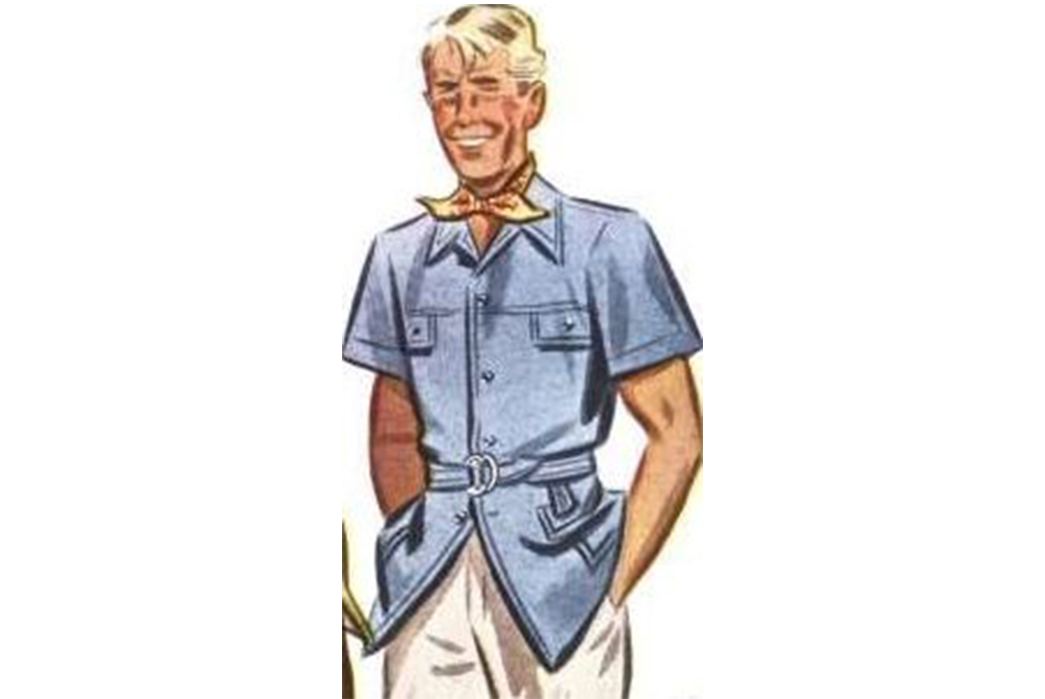
French Terry shirt, fuzzy side out. Image via Esquire.
Though we’ve seen French terry used in modern sweatshirts constantly—with the smooth side facing out and the pile facing in for warmth—French terry was originally worn the opposite way.
First worn on the French Riviera, as pictured in the Esquire illustration above, French terry was traditionally worn with the fuzzy, piled side facing outward and the smooth part inside. Though this partially defeats the towel-like purpose of normal terrycloth, these shirts merely emulated the style and were honestly worn by fancy folks who weren’t swimming all that much. French terry is much stretchier than standard terrycloth and not nearly as heavy.
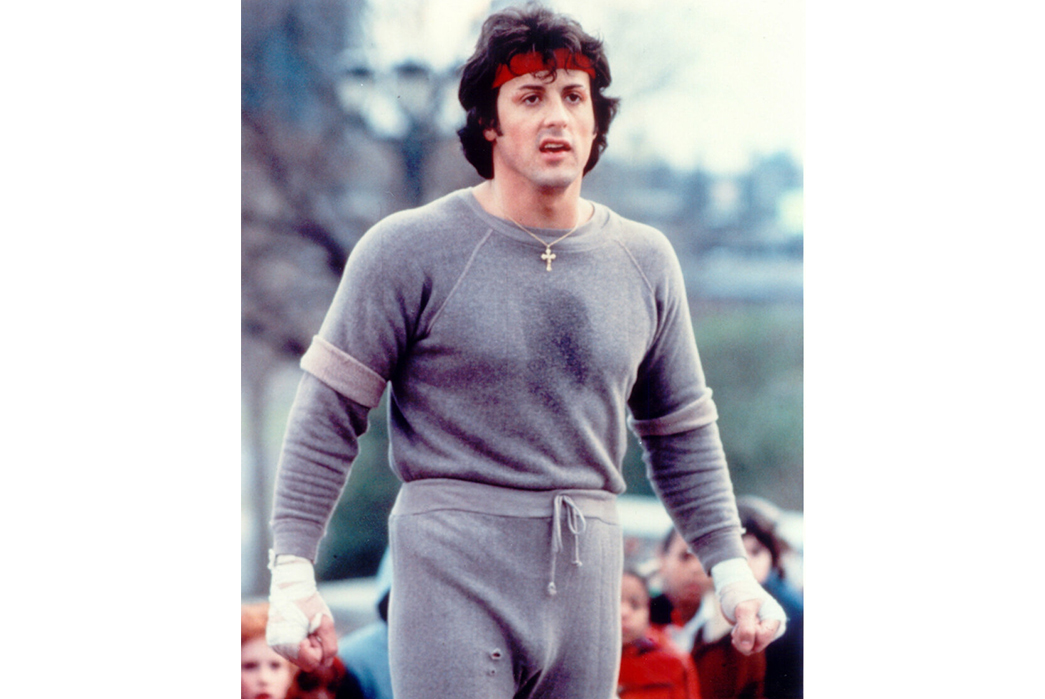
Rocky in sweats. Image via Golf Digest.
French terry doesn’t just make for good beachwear, it’s also seen its fair share of sporty clothing. That piled side turned inward is perfect for soaking up the sweat of a good workout, although nowadays, when most of us don’t exercise in a groutfit, it’s mostly just to add a little warmth and coziness to your favorite sweatshirt.
French terry is also more frequently blended with other fibers than its double-sided older brother. It’s not at all uncommon to add lycra, spandex, and sometimes even rayon to the mix.
Terry and French Terry Today

Terrycloth has enjoyed meandering success over the years, peaking in the 80s and 90s thanks to brands like Fila, Kangol, Adidas, and other sportswear giants that used it on a range of garments and accessories. After around 20 years of obscurity, resort wear inspired by both the French Riviera and the American vacation boom has provided terrycloth with a route back into popular consciousness.
Now worn in a markedly different and less beachy context, French terry has found its footing in the world of pseudo-athletic comfy clothes, like the sweatsuit worn by Rocky Balboa. You might not go to the gym fully decked out in heather grey French terry, but its history remains evocative enough that we still wear it, even just for leisure.
Perhaps the first use of terrycloth is still the most important and most common — the humble everyday towel. Let’s all give thanks for this innovation in softness and water-absorbing technology that keeps us cozy out of the shower and on the beach. The double-sided piled fabric might have never dominated menswear beyond the beachfront, but we use the stuff every single day.
Terry Cloth at Iron & Resin
Iron & Resin knows a thing or two about toweling off with terry. They’re based in the surf mecca of Ventura, California and their new terry collection features tops and bottoms to help you lounge in comfort and style.
If there’s one shirt you want poolside, it’s the Terry Polo. Made from a cotton blend French terry, it’s smooth on the inside and absorbent on the out and the solo chest pocket looks like it was made to cradle your sunglasses.
Available for $59 at Iron & Resin.
If you’re looking for a few more buttons on your terry top, the Terry Shirt is your straightforward button up, although I’d wager optimal use for those buttons is not using them at all.
Available for $59 at Iron & Resin.
Two pockets in the front, one in the back. This drawstring pair of shorts is there for you whether you just peeled off a wetsuit or just need to take the dog out in the morning.
Available for $69 at Iron & Resin.
Like that? Read these:
What did you think of today's newsletter? |




